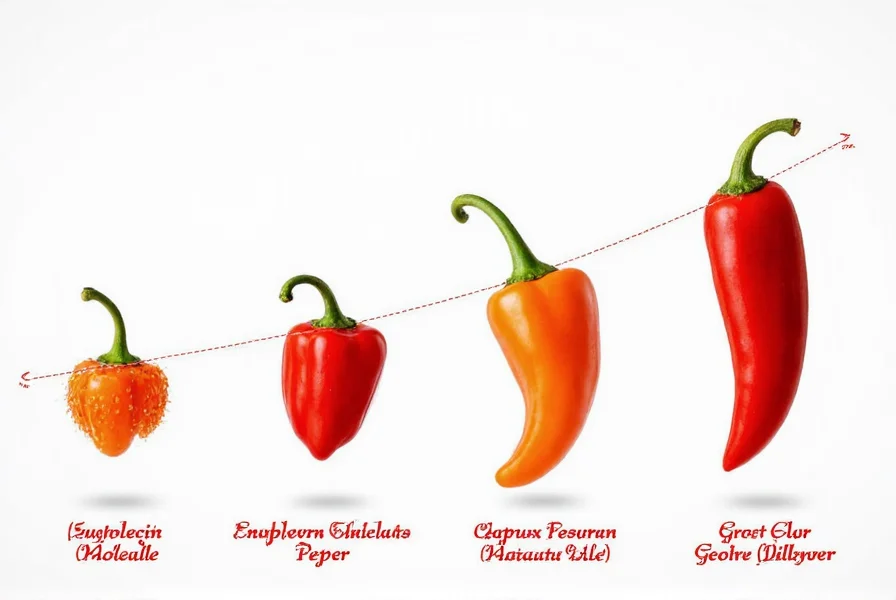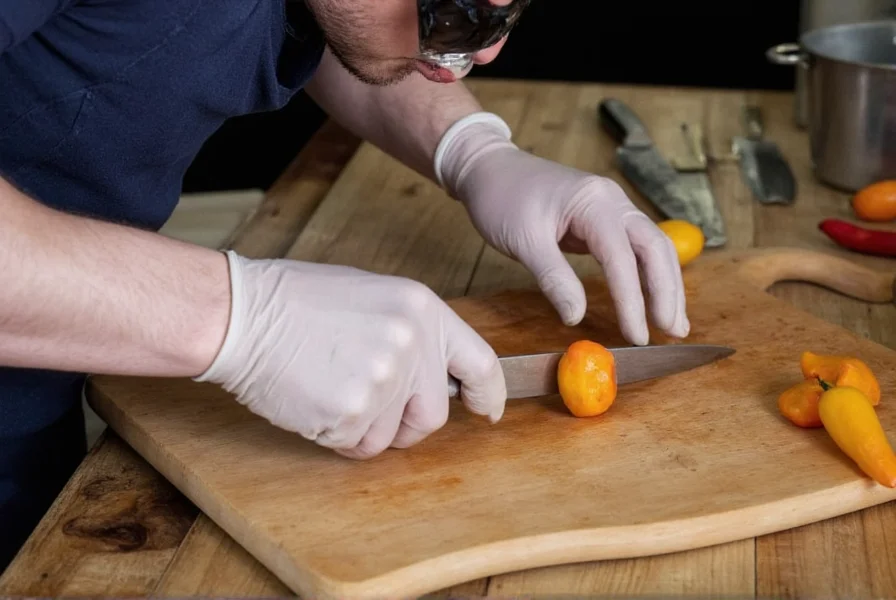The Scoville scale remains the standard measurement for chili pepper heat, but understanding where ghost peppers fall on this spectrum requires more than just numbers. As one of the first peppers to break the one-million SHU barrier, the ghost pepper's heat intensity demands careful consideration for culinary use and handling.
Understanding the Scoville Heat Measurement System
Developed by pharmacist Wilbur Scoville in 1912, the Scoville Organoleptic Test originally measured heat through human tasters diluting pepper extract until the burn became undetectable. Today, high-performance liquid chromatography (HPLC) provides precise measurements of capsaicinoids—the compounds responsible for heat—which are then converted to Scoville Heat Units.
Modern testing reveals significant variation in ghost pepper heat levels due to growing conditions, soil composition, and climate factors. This natural variability explains why some ghost peppers test at the lower end of the scale while others approach the maximum recorded heat.
Ghost Pepper Heat Range Explained
The official Scoville range for ghost peppers (Bhut Jolokia) spans from 855,000 to 1,463,000 SHU. To put this in perspective:
| Pepper Variety | Scoville Heat Units | Heat Comparison |
|---|---|---|
| Ghost Pepper (Bhut Jolokia) | 855,000–1,463,000 SHU | Reference point |
| Habanero | 100,000–350,000 SHU | 2.5–8.5x milder |
| Jalapeño | 2,500–8,000 SHU | 100–350x milder |
| Carolina Reaper | 1,400,000–2,200,000 SHU | Slightly hotter on average |
| Sweet Bell Pepper | 0 SHU | No heat |
This ghost pepper heat scale comparison shows why culinary professionals treat these peppers with extreme caution. The lower end of the ghost pepper range already exceeds the maximum heat of most habaneros, while the upper limit approaches the territory of newer super-hot varieties like the Carolina Reaper.

Practical Implications of Ghost Pepper Heat
Experiencing ghost pepper heat goes beyond mere spiciness. Consuming even a small amount can trigger:
- Immediate burning sensation that lasts 30-45 minutes
- Physical reactions including sweating, flushing, and increased heart rate
- Potential gastrointestinal distress in sensitive individuals
- Temporary numbness in the mouth and throat
Chefs who work with ghost peppers recommend starting with minuscule amounts—often just a few scrapings from the tip of a knife. The heat compounds distribute unevenly within the pepper, making precise measurement challenging. When cooking with ghost peppers, always wear gloves and avoid touching your face.
Safety Considerations for Handling Ghost Peppers
Safety should be your primary concern when working with ghost peppers. Capsaicin, the compound responsible for the heat, can cause severe irritation to skin and eyes. Professional handlers recommend:
- Wearing nitrile gloves (latex won't protect against capsaicin)
- Using protective eyewear during preparation
- Working in well-ventilated areas to avoid inhaling capsaicin particles
- Having dairy products like milk or yogurt nearby to neutralize heat
- Never using bare hands to touch your face after handling
If you experience capsaicin exposure to your eyes, rinse thoroughly with cool water for 15 minutes. For skin exposure, wash with soap and water, then apply a mixture of baking soda and water to help neutralize the compound.

Ghost Pepper History and Recognition
Native to Northeast India, ghost peppers (known locally as Bhut Jolokia) gained international recognition when researchers from New Mexico State University verified their heat level in 2007. The Guinness World Records certified them as the world's hottest chili pepper from 2007 to 2011, before being surpassed by newer hybrid varieties.
Despite losing the official title, ghost peppers remain popular for their complex flavor profile that combines intense heat with subtle smoky, fruity notes. This unique combination makes them valuable in controlled amounts for certain regional cuisines and specialty hot sauces.
Frequently Asked Questions
How does ghost pepper heat compare to habanero peppers?
Ghost peppers are significantly hotter than habaneros. While habaneros typically range from 100,000–350,000 SHU, ghost peppers measure 855,000–1,463,000 SHU. This means ghost peppers are approximately 2.5–8.5 times hotter than habaneros. The mildest ghost pepper still exceeds the hottest habanero, making direct substitution in recipes potentially dangerous without significant quantity adjustments.
What does 1 million Scoville units feel like when consuming ghost pepper?
Consuming ghost pepper delivers an immediate, intense burning sensation that typically peaks within 30-60 seconds. Most people experience significant physical reactions including sweating, facial flushing, increased heart rate, and watery eyes. The heat persists for 30-45 minutes before gradually subsiding. First-time consumers often report temporary numbness in the mouth and throat, with some experiencing gastrointestinal discomfort for several hours afterward. Dairy products provide the most effective relief by binding to capsaicin molecules.
Can you build tolerance to ghost pepper heat over time?
Yes, regular consumption of hot peppers can build temporary tolerance through a process called desensitization. Capsaicin triggers pain receptors (TRPV1), and repeated exposure causes these receptors to become less responsive. However, this tolerance is temporary and diminishes when exposure stops. Importantly, building tolerance doesn't reduce the actual heat measurement on the Scoville scale—it only changes your perception of the heat. Even experienced eaters should respect the ghost pepper's extreme heat level and consume responsibly.
Why do ghost peppers have such a wide Scoville range?
Ghost peppers exhibit significant heat variation due to multiple environmental factors including soil composition, climate conditions, water availability, and sunlight exposure. Peppers grown in stressful conditions (less water, more sun) typically produce higher capsaicin levels as a defense mechanism. Additionally, the heat distribution within individual peppers varies, with seeds and inner membranes containing the highest concentration of capsaicin. This natural variability explains why laboratory tests of the same pepper variety can yield results spanning hundreds of thousands of Scoville units.











 浙公网安备
33010002000092号
浙公网安备
33010002000092号 浙B2-20120091-4
浙B2-20120091-4